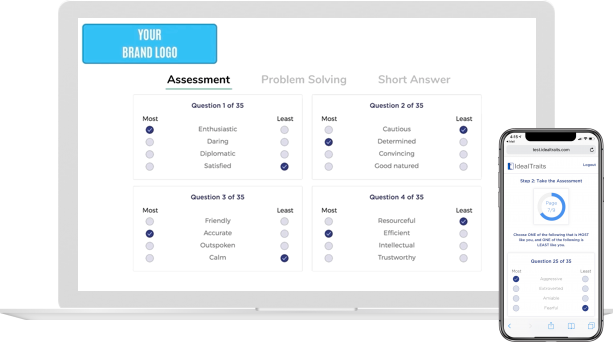Workplace Bullying in the Insurance Industry
According to a 2021 survey from the Workplace Bullying Institute, about 30% of people experience bullying at work, and another 19% witness it. That means half of the workforce is affected by bullying at work, and 66% know it happens. People in industries such as insurance — where competition is high, or rewards are driven by results – might be even more prone to experiencing or witnessing bullying, as these risk factors can facilitate and perpetuate a culture of bullying.
|
Author: Catherine Mattice, MA, SPHR, SHRM-SCP What is Workplace Bullying?Workplace bullying, or abusive conduct, involves repeated and hurtful behaviors aimed at intimidating, belittling, or isolating an individual. It often manifests as a misuse of power or authority by one or more individuals against a target. Bullying behaviors can occur in person or online and may be verbal or nonverbal.
As an expert in the field of workplace bullying, I’ve found over the years that bullying behaviors can be categorized into three areas below.
While most of us have engaged in negative or hurtful behavior along the way, I’ve noticed that all three of the categories are present when clients are calling me for help and using words like bullying. Someone who constantly makes inappropriate jokes is probably not being called a bully, although that behavior still needs to be addressed. Psychological and Emotional Impacts on Individuals Research from Culture Shift shows that 35% of people in the insurance industry feel less connected to their work because of a bad workplace culture; about 41% of insurance workers say their productivity suffers because of it. Most of the time, the organization facilitates the bullying behavior that occurs within the organization. Yes, you read that right. As a coach specializing in coaching leaders who engage in toxic behavior, my coaching clients are usually high performers, bring results, are extremely valuable to the organization, and highly intelligent. Thus, the organization allows the behavior to continue for fear of losing the benefits this individual brings. Of course, the organization is keeping a top performer at the expense of others’ dignity and well-being. In insurance agencies, “rainmakers” can sometimes treat their support staff, particularly customer service representatives, poorly. These customer service reps are the backbone of any agency, yet they may face dismissive or even outright abusive behavior from the rainmaker. The disruptive behavior of these individuals not only drives away good employees but also severely impacts the productivity of targets and bystanders alike. They can suffer from various consequences, including:
Indeed, bullying has profound and long-lasting effects on the people around it. In severe cases, thoughts of or actual suicide or violence may even arise.
Impact on the Work Environment and the Business While many would regard workplace bullying as wrong, not everyone is aware of or would recognize its tangible costs. Yet
Additional monetary costs come from workforce complaints, for example, where managers and HR spend countless hours counseling people, conducting investigations, talking to legal counsel, and more. All of that wasted time adds up.
Turnover is also expensive, and workplace bullying means employees have one foot out the door. The Society for Human Resources Management (SHRM), finds that . When a person leaves, other people have to pick up their slack, important work might not get done, time is spent training the new hire, and work quality and quantity is lost as new hires take about 9 months to get up to speed. Exiting and current employees might also complain to the world on Glassdoor (where employees can leave reviews about employers), on their social media, and with their friends and family, which hurts the employer brand and drives good talent away. Beyond all of this, consider the time wasted as team members gossip about the bad behavior, and consider the decrease in self-esteem, job satisfaction, company loyalty, learning and innovation, community reputation, relationships, and ability to meet goals. We suggest you check out our Culture Calculator—a free tool to measure the impact of your workplace culture on your organization’s success – to get an idea of what incivility or bullying is costing you. Steps for Organizations to Address Workplace Bullying The first step is to conduct a workforce survey to uncover problems and gain clarity on steps to resolution. Be sure to do a climate assessment, which seeks to understand your culture. This is not to be confused with an engagement survey, which seeks only to measure the level of engagement. We’ve had many clients whose engagement survey scores were great, but when we asked about things like inclusivity, trust in leadership, or effectiveness of communication, the scores pointed to much room for improvement.
Second, hold a few planning meetings to review the data and develop a clear and tangible action plan for change. We like to engage with a team made up of a few leaders, but mostly of employees from various departments, levels, and demographics. ? Third, implement the plan. Now that you have a plan, go for it. Keeping in mind that culture change happens through change in organizational processes and systems, and individual behavior change, your plan will have several action items in both areas. Organizational change plans might include, for example:
Behavior can change through the updated performance management system and training programs to support the workforce’s success. Topics might include the following.
Note that a single workshop on civility or communication skills is never the answer. The number one reason bullying occurs in your workplace is that leaders allow it. Therefore, the organization has to take responsibility for changes that will facilitate respectful workplace behavior and hold everyone, no matter how productive, accountable. Start by building intolerance for “merely” disrespectful behavior, such as interrupting someone in a meeting, and build from there. About the Author Catherine Mattice, MA, SPHR, SHRM-SCP, is the founder/CEO ofCivility Partners, a strategic organizational development firm focused on helping organizations create respectful workplace cultures and specializing in turning around toxic cultures. Civility Partners’ clients range from Fortune 500’s to small businesses across many industries. Catherine is a TEDx speaker and an HR thought-leader who has appeared in such venues as USA Today, Bloomberg, CNN, NPR, and many other national news outlets as an expert. She’s an award-winning speaker, author and blogger, and has 50+ courses reaching global audiences on LinkedIn Learning. Catherine’s award-winning book, BACK OFF! Your Kick-Ass Guide to Ending Bullying at Work, was hailed by international leadership-guru, Ken Blanchard, as, “the most comprehensive and valuable handbook on the topic.” _____________________________________________________________________________________________________________________________________ Copyright © 2024, Big “I” Virtual University. All rights reserved. No part of this material may be used or reproduced in any manner without the prior written permission from Big “I” Virtual University. For further information, contact [email protected].? |








